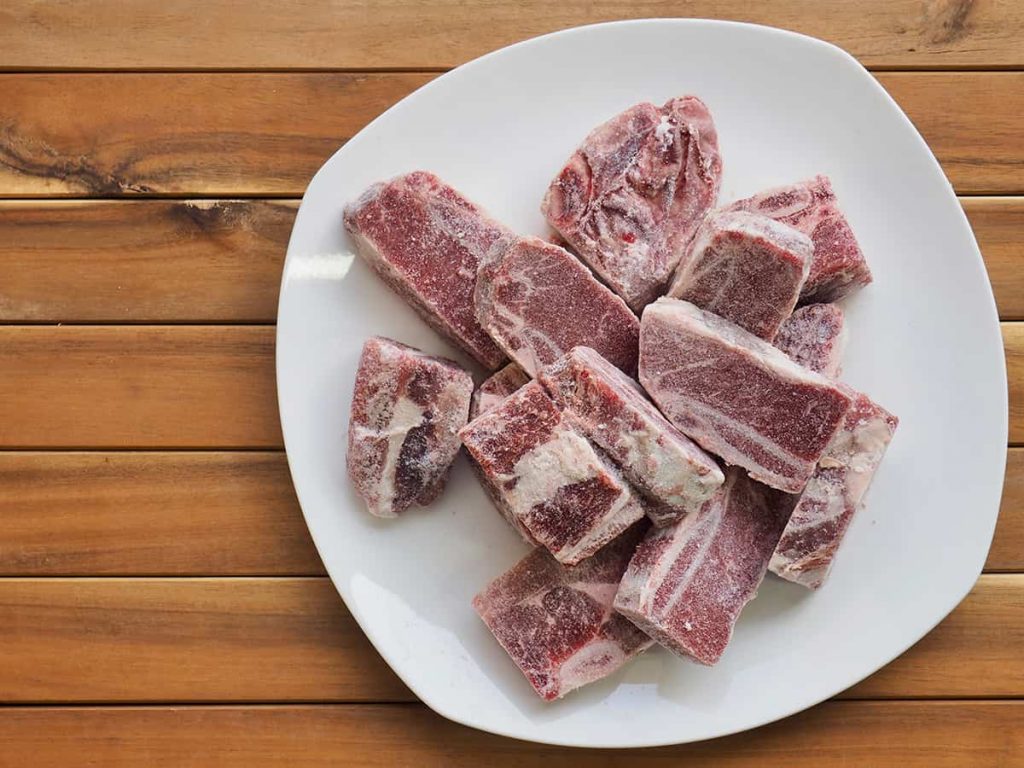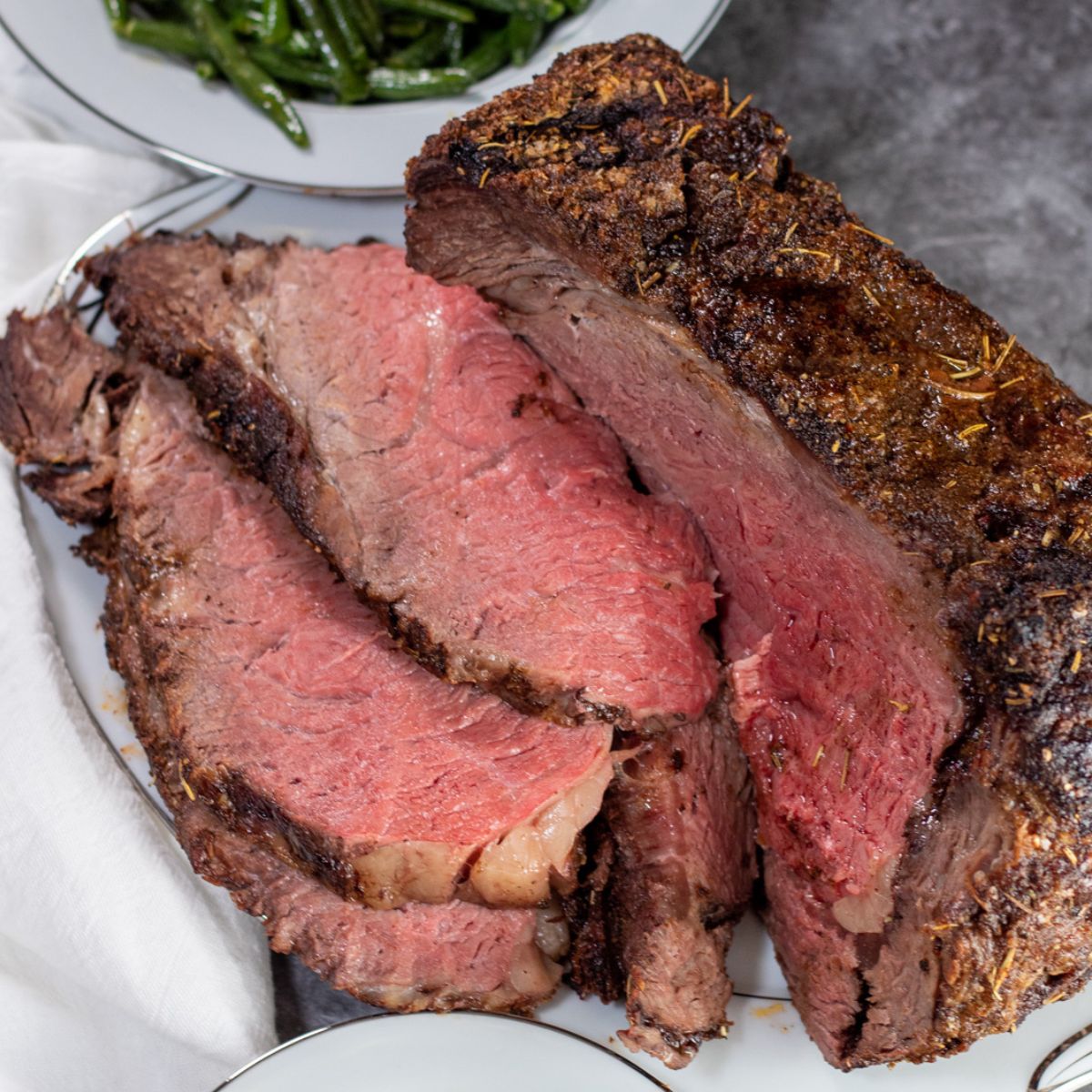How To Thaw A Prime Rib Roast Quickly: Preparing a perfect prime rib requires careful thawing. Improper thawing can lead to foodborne illness, while rushed methods risk uneven cooking. This guide explores safe and efficient techniques, from refrigerator thawing to accelerated methods using cold water baths and microwaves, ensuring your prime rib is ready for a delicious meal.
Need to thaw a prime rib roast quickly for tonight’s dinner party? Time is of the essence, so consider using the cold water method. While you’re waiting, perhaps browse some hair accessories – maybe some stylish sally beauty hair extension clips for a glamorous look to complement your delicious meal. Returning to the roast, remember to change the water every 30 minutes for optimal thawing.
We’ll delve into the science behind thawing, examining how factors like roast size, thickness, and starting temperature impact the process. We’ll also cover essential post-thawing handling to maintain food safety and quality, including visual cues to identify a properly thawed roast. Whether you’re a seasoned chef or a novice cook, this comprehensive guide will equip you with the knowledge to thaw your prime rib safely and efficiently.
Safe Thawing Methods
Thawing a prime rib roast improperly can lead to dangerous bacterial growth, potentially causing foodborne illness. Safe thawing requires careful attention to temperature control and preventing the roast from entering the “danger zone” (40°F to 140°F), where bacteria multiply rapidly. This section details safe thawing methods, emphasizing refrigerator thawing as the safest option.
Refrigerator Thawing
Refrigerator thawing is the safest method for thawing a prime rib roast. The consistently cold temperature inhibits bacterial growth. Place the roast on a plate or tray to catch any drips, ensuring it’s not directly on the refrigerator shelf. Allow ample time for thawing, as the process is slow but safe.
Thawing Time Based on Roast Size
The time required for refrigerator thawing depends significantly on the roast’s weight and thickness. A 3-4 pound roast may take 1-2 days, while a larger 6-8 pound roast could require 2-3 days or even longer. Always ensure the roast is completely thawed before cooking.
Tips for Even Thawing in the Refrigerator
For even thawing, place the roast on a single layer on a plate or tray, ensuring good air circulation around it. Avoid overcrowding the refrigerator. Turning the roast occasionally can help promote even thawing, but it’s not strictly necessary.
Comparison of Thawing Methods
| Method | Time | Safety Considerations | Evenness of Thawing |
|---|---|---|---|
| Refrigerator | 1-3 days (depending on size) | Safest method; prevents bacterial growth. | Generally even, but turning may help. |
| Cold Water Bath | 2-6 hours (depending on size) | Requires frequent water changes and careful temperature monitoring to avoid the danger zone. | Relatively even, but requires attention. |
| Microwave | Varies greatly; check manufacturer’s instructions. | Highest risk of uneven thawing and potential for bacteria growth if not monitored closely. | Often uneven; requires frequent rotation and checking. |
Accelerated Thawing Techniques
While refrigerator thawing is the safest, accelerated methods like cold water baths and microwave thawing can be used when time is limited. However, these methods require careful monitoring to prevent unsafe temperature fluctuations.
Cold Water Bath Method
The cold water bath method involves submerging the roast in cold water, changing the water every 30 minutes to maintain a consistently low temperature. This method is significantly faster than refrigerator thawing but still requires careful monitoring to avoid the danger zone.
Cold Water Bath Steps
Place the roast in a leak-proof plastic bag. Submerge the bagged roast in a large bowl or container filled with cold tap water. Ensure the water completely covers the roast. Change the water every 30 minutes to maintain a consistently cold temperature. Monitor the water temperature regularly.
Thawing time will depend on the roast size, but expect a 2-6 hour process.
Cold Water Bath vs. Refrigerator Thawing, How To Thaw A Prime Rib Roast Quickly
The cold water bath method is considerably faster than refrigerator thawing. However, it requires more vigilance to ensure the roast doesn’t reach unsafe temperatures. Refrigerator thawing remains the safest option.
Microwave Defrost Setting

Source: howdykitchen.com
Microwave thawing is the fastest method but carries the highest risk of uneven thawing and bacterial growth. Use the defrost setting and rotate the roast frequently, checking its temperature to avoid overheating.
Microwave Thawing Problems and Solutions
- Uneven thawing: Rotate the roast frequently and use a turntable if available.
- Overcooking: Monitor the roast closely and stop the microwave frequently to check the temperature.
- Bacterial growth: Use the defrost setting only and thaw immediately before cooking.
Factors Affecting Thawing Time
Several factors influence the time it takes to thaw a prime rib roast. Understanding these factors allows for better time management and ensures safe thawing practices.
Influence of Roast Size and Temperature
The roast’s weight and thickness directly impact thawing time. Larger, thicker roasts take longer to thaw. The initial temperature of the roast also matters; a roast that’s been frozen for a longer period will naturally take longer to thaw.
Impact of Roast Shape
While not as significant as weight and thickness, the shape of the roast can slightly affect thawing speed. A more uniformly shaped roast will generally thaw more evenly than an irregularly shaped one.
Estimated Thawing Times
| Weight (lbs) | Refrigerator Time (days) | Cold Water Time (hours) | Microwave Time (approx. hours) |
|---|---|---|---|
| 3-4 | 1-2 | 2-4 | 0.5-1 |
| 5-6 | 2-3 | 4-6 | 1-1.5 |
| 7-8 | 3-4 | 6-8 | 1.5-2 |
Note: Microwave times are approximate and depend heavily on microwave wattage and roast characteristics. Always monitor closely.
Post-Thawing Handling
Proper handling of a thawed prime rib roast is crucial to maintain food safety and prevent bacterial growth. This section Artikels best practices for storage and determining if the roast is still safe to cook.
Safe Storage of Thawed Roast
Once thawed, a prime rib roast should be refrigerated and cooked within 1-2 days. Store it in a sealed container or tightly wrapped in plastic wrap to prevent drying and bacterial contamination.
Determining Roast Safety
A safe thawed roast will have a consistent color and texture throughout. It should not have any unusual odors or slimy surfaces. If you have any doubts, discard the roast.
Signs of Spoilage
- Unpleasant odor
- Slimy or sticky texture
- Discoloration (especially gray or green)
- Visible mold
Visual Guide to Thawing Stages: How To Thaw A Prime Rib Roast Quickly
Observing the visual changes during thawing helps determine the roast’s progress. This section describes the appearance and texture at different thawing stages.
Thawing Stages
Frozen: The roast will be solid and firm, with a uniformly opaque appearance. The surface will be hard to the touch.
Partially Thawed: The outer edges of the roast will begin to soften, and the color may appear slightly less opaque. Some areas might feel pliable, while the center remains frozen.
Fully Thawed: The roast will be uniformly soft and pliable throughout. The color will be consistent and the texture will be even, similar to a chilled roast that has never been frozen.
Visual Temperature Assessment
While not as precise as a thermometer, a visual assessment can provide a general indication of the roast’s internal temperature. A fully thawed roast will feel uniformly soft and pliable to the touch throughout. Any areas that remain firm indicate the roast is still partially frozen. The color should be consistent and free of any discoloration or unusual spots.
Summary

Source: bakeitwithlove.com
Thawing a prime rib roast successfully hinges on understanding the risks of improper thawing and selecting the appropriate method based on your timeframe and resources. By following the guidelines Artikeld here, including careful temperature monitoring and proper handling, you can confidently prepare a delicious and safe prime rib roast every time. Remember, a little planning goes a long way in ensuring a culinary triumph.
